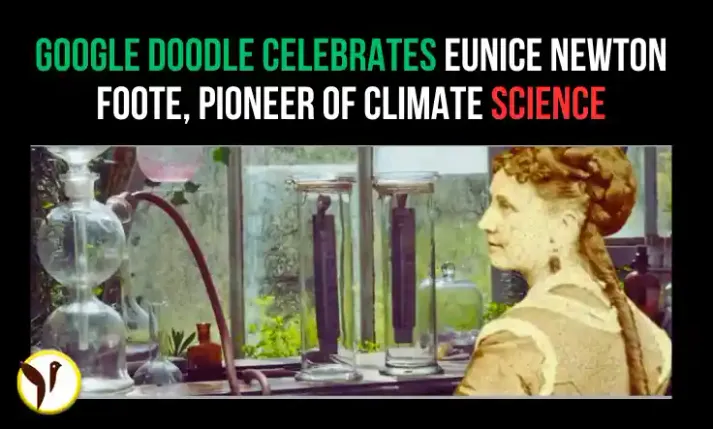Eunice Newton Foote was an American scientist, inventor, and women's rights campaigner. She was the first scientist to conclude that certain gases warmed when exposed to sunlight and that rising carbon dioxide (CO2) levels would change atmospheric temperature and could affect climate, a phenomenon now referred to as the Greenhouse effect.
Foote was born in Connecticut in 1819. She attended Troy Female Seminary, where she was encouraged to attend science classes and participate in chemistry labs. After graduating, she married Elisha Foote and settled in Seneca Falls, New York.
In 1856, Foote conducted a series of experiments that demonstrated the ability of carbon dioxide to trap heat. She filled glass cylinders with different gases and exposed them to sunlight. The cylinder filled with carbon dioxide became hotter than the others, which led Foote to conclude that carbon dioxide had a unique ability to absorb heat from the sun.
Foote published her findings in the American Journal of Science and Arts in 1856. Her paper was the first known publication in a scientific journal on physics by a woman.
Foote's work was largely ignored by the scientific community at the time, but it is now recognized as the earliest known scientific research to demonstrate the existence of greenhouse gases and their potential to effect changes in climate.
Foote died in 1888, but her legacy lives on. She is considered to be one of the pioneers of climate science, and her work is still relevant today as we grapple with the challenges of climate change.
Google is celebrating Foote's 204th birthday with a doodle on its homepage today. The doodle features an illustration of Foote conducting her experiments, and it includes a link to a website with more information about her life and work.
Foote's story is an inspiration to women in science everywhere. She was a pioneer who broke down barriers and made significant contributions to our understanding of the world around us. Her work is still relevant today, and it is a reminder that women can and do make important contributions to science.
Here are some motivational factors from Foote's story:
- Never give up on your dreams: Foote faced many challenges as a woman in science, but she never gave up on her dream of making a contribution to the field. She was a pioneer who paved the way for other women in science.
- Don't be afraid to challenge the status quo: Foote's work challenged the prevailing scientific understanding of the greenhouse effect. She was not afraid to go against the grain and ask new questions.
- Use your voice to make a difference: Foote was a vocal advocate for women's rights. She used her platform as a scientist to speak out against inequality.
Foote's story is a reminder that we all have the power to make a difference. If we have a dream, we should never give up on it. We should also be willing to challenge the status quo and use our voices to make a difference.
Also read, Janet Yellen and Nirmala Sitharaman Drive Tax Reform and Sustainable Development at G20 Meeting







